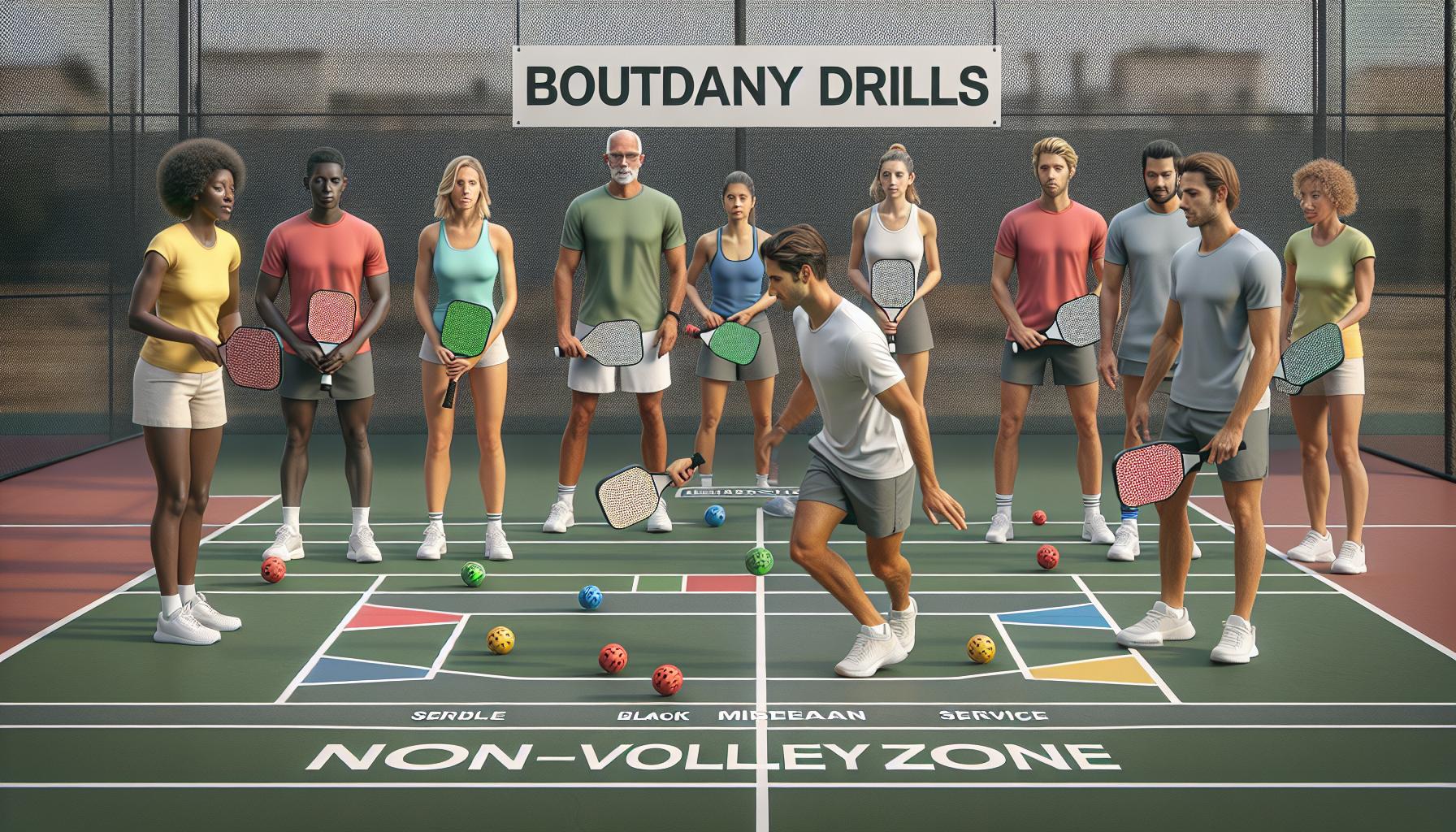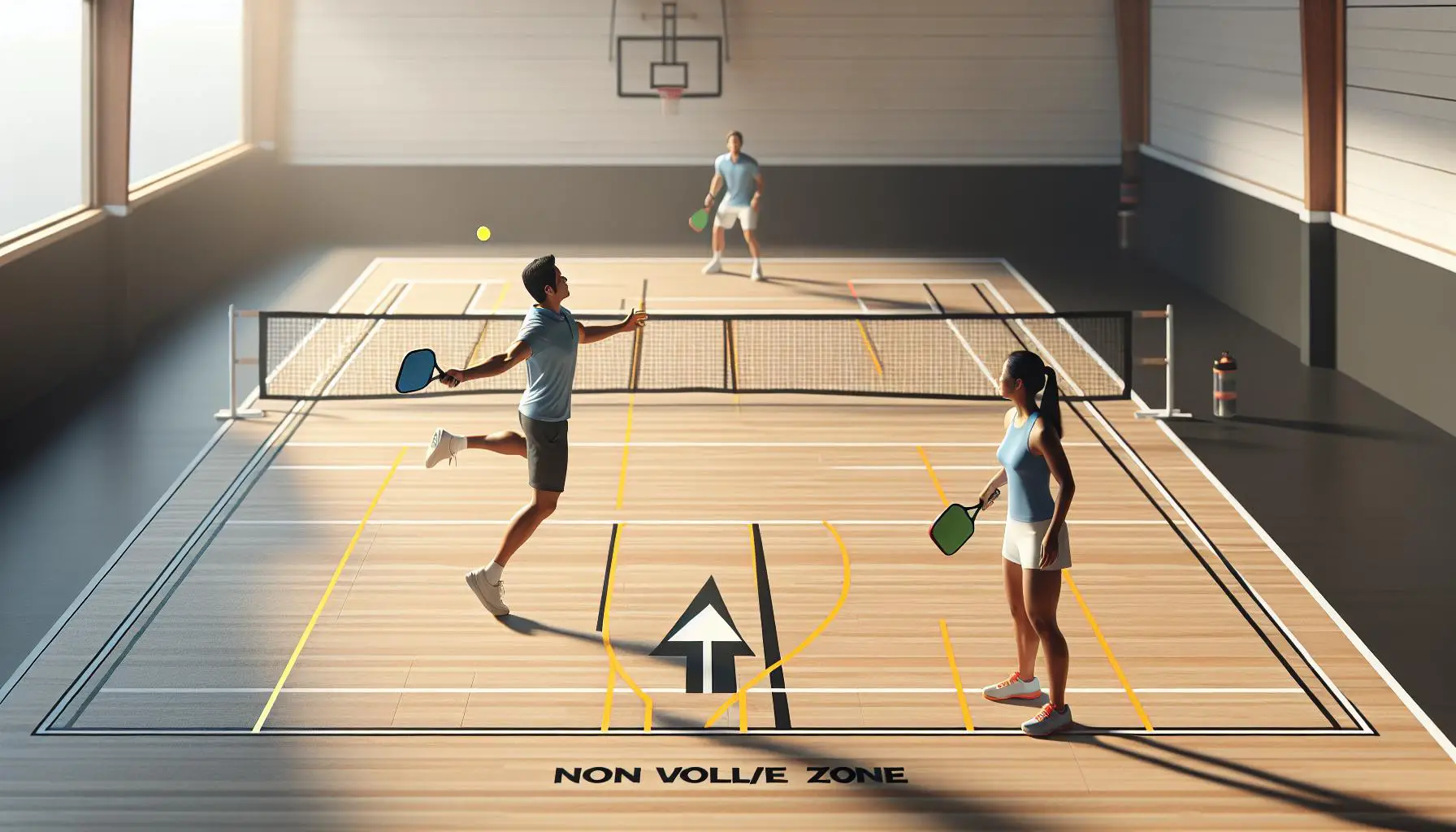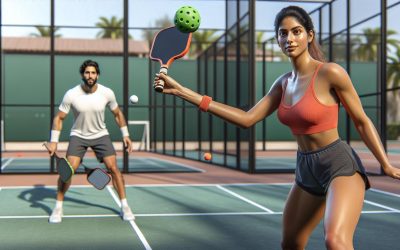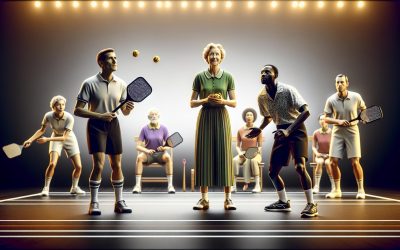Pickleball’s skyrocketing popularity isn’t just a fad; it’s a full-blown movement. As more folks hit the courts, understanding the game’s nuances becomes crucial. Avoiding common rule violations isn’t just about keeping the peace during play; it’s about respecting the game and your fellow players.
Whether you’re a seasoned pro or a newbie with a paddle, there’s always something new to learn. From the no-volley zone rules to the intricacies of serving, the devil’s in the details. Let’s dive into how you can avoid common pitfalls and keep your game above board.
Understanding the No-Volley Zone Rule
In the world of pickleball, mastering the no-volley zone rule is crucial for any player looking to step up their game. Often called the “kitchen,” this area is a pivotal space on the court where specific rules apply that can significantly impact gameplay. Getting to grips with this rule not only enhances a player’s strategy but also ensures a fair and enjoyable experience for everyone involved.
At its core, the no-volley zone is a seven-foot space extending from the net on either side, clearly marked to distinguish it from the rest of the court. Players need to remember that volleying the ball—hitting it in the air without letting it bounce—in this area is prohibited. This rule encourages more strategic gameplay and reduces the dominance of aggressive net play.
However, there are nuances to this rule that often catch players off guard. For example, while it’s well known that players can’t volley in the kitchen, fewer are aware that this prohibition extends to the follow-through. That means if a player volleys a ball near the kitchen line and their momentum carries them into the no-volley zone, the move is considered a fault. Similarly, if any part of the player’s paddle or body touches the kitchen line or the area within during a volley, it also results in a fault.
Here’s a breakdown of key points regarding the no-volley zone rule:
- Prohibited Actions: Volleys must not be made within the no-volley zone.
- Momentum Rule: Players must not enter the no-volley zone during or after a volley due to momentum.
- Line Contact: Touching the no-volley zone line or entering the zone during a volley is a fault.
Adhering to the no-volley zone rule requires not just an understanding of these points but also a good deal of practice. Players often participate in drills designed specifically to help them control their movement around the kitchen, preventing accidental faults. For example, practicing volleys from just behind the no-volley line can help players get comfortable with maintaining their balance and controlling their momentum to avoid entering the kitchen.
Mastering the Serve

In pickleball, the serve sets the tone for the remainder of the point, making it crucial for players to master this initial move. Unlike other racquet sports, pickleball has specific serving rules that, if not followed, can lead to immediate faults, handing the advantage over to the opponent.
Firstly, players must serve underhand, with the paddle below their waist at the moment of impact. This requirement ensures a level playing field by limiting the serve’s power and speed. Additionally, the ball must be hit in an upward arc, further controlling the serve’s speed and making the game accessible to players of all skill levels.
The serving player must also stand behind the baseline, with both feet outside the sideline and the centerline. This positioning rule prevents players from gaining an unfair advantage by serving too close to the net. To ensure compliance, players often practice serving from various positions along the baseline, developing accuracy and confidence in their ability to serve within the legal bounds.
Another critical factor in serving is the double bounce rule. After the serve, the ball must bounce once in the opponent’s court, and then the return shot must also bounce once before either side can volley the ball out of the air. This rule adds a strategic layer to serving as players aim to place their serves in a manner that makes it challenging for the opponent to return a shot conducive to a strategic advantage.
For a successful serve in pickleball, the ball must also land within the opposing side’s service court, excluding the no-volley zone or “kitchen.” Accuracy is key here. Players dedicate time to practicing serves that target different areas of the service court to keep their opponents guessing and off-balance.
Effective serving strategies incorporate a mix of power, placement, and spin. Players skilled in adding spin to their serves can make the ball more difficult to return by causing it to bounce unpredictably. These techniques require practice and a deep understanding of pickleball physics to execute consistently.
To avoid common serving faults, players should:
- Ensure their paddle contact is below the waist.
- Keep both feet behind the baseline until after they hit the ball.
- Serve underhand and in an upward arc.
- Aim strategically, avoiding the no-volley zone.
Avoiding Double Bouncing Errors

In pickleball, understanding and preventing double bounce errors is essential for maintaining the flow of the game and adhering to its rules. These errors occur when the ball bounces more than once on one side of the court before being returned, violating the double bounce rule. This rule serves as a cornerstone of pickleball, ensuring a fair start to each rally and preventing players from rushing the net too soon. To navigate these situations successfully and avoid common pitfalls, players must integrate several strategies and awareness techniques into their gameplay.
Firstly, players should focus on enhancing their reaction times. Fast reflexes are key in reaching and returning the ball after the first bounce, particularly for shots that are carefully placed by opponents to exploit weaknesses. Activities such as agility drills and reaction time exercises can significantly improve a player’s ability to respond swiftly to unexpected shots.
Secondly, mastering the art of anticipation plays a crucial role. By reading the opponent’s body language and paddle position, players can often predict the direction and type of shot that will be played. This foresight allows for quicker positioning and a better chance of returning the ball within the constraints of the double bounce rule. Watching experienced players and actively analyzing gameplay can sharpen these predictive skills over time.
In addition to physical preparedness, a strong understanding of the service court and no-volley zone is indispensable. Players must remember that the ball must bounce once in the receiving team’s service court before it can be returned, and similarly, the serving team must allow the ball to bounce once upon its return before playing it. This exchange ensures the game starts fairly, preventing aggressive net play too early in the point. Misjudgments in this area often lead to faults and can easily hand the advantage to the opposing team.
Furthermore, continuous practice with a focus on ball control and precision allows players to send the ball to specific areas of the court, challenging the opponent while adhering to the double bounce rule. This skill not only prevents double bouncing errors but also turns the rule into a strategic element of play. Drills that simulate real-game scenarios are particularly effective for honing these abilities.
Lastly, communication between partners in doubles play is vital. Calling shots and making quick decisions together can prevent confusion and collisions, ensuring smooth adherence to the double bounce rule. Teams that communicate effectively can strategize more efficiently, reducing the risk of unintentional errors.
Learning the Proper Scoring System

Pickleball stands out due to its unique scoring system, which requires a clear understanding to avoid common rule violations. Players score points only when they serve, and games typically go to 11, 15, or 21 points, winning by a margin of at least two points. This system can be tricky for beginners and even seasoned players at times.
Before diving into strategies, it’s crucial to grasp the basic pattern of calling out the score in pickleball. The score call always consists of three numbers: the serving team’s score, the receiving team’s score, and a server number (1 or 2), indicating whether it’s the first or second server in doubles play. For instance, a score call might sound like “4-3-2,” where the serving team has 4 points, the receiving team has 3, and it’s the second server’s turn.
Here are some key points to remember about scoring to avoid violations:
- The server must call the score before serving.
- Points can only be scored by the serving team.
- In doubles, the service starts on the right-hand side when the team’s score is even and switches to the left when it’s odd.
Misunderstanding how to properly score in pickleball can lead to disputes and interruptions in play. Therefore, familiarizing oneself and practice calling scores according to the rules becomes an invaluable skill.
To further avoid scoring mishaps, here are some practical tips:
- Regularly practicing score calling during friendly matches or practice sessions helps embed the scoring pattern into a player’s routine.
- Utilize drills focused on serve and serve-return scenarios to reinforce the importance of score calling in game-like conditions.
- Engage in mock competitions with a focus on accurate scorekeeping to simulate the pressure of remembering scores during competitive play.
The goal is to turn score keeping from an afterthought into an automatic process that enhances the flow of the game. By doing so, players can focus more on strategy and gameplay, rather than being caught up in scoring ambiguities.
Mastery of the scoring system in pickleball also enables players to become more efficient communicators on the court. Clear, loud calls reduce the chance of misunderstandings and keep the game moving smoothly. It’s a skill that also teaches respect for opponents and officials, as it demonstrates a commitment to fair play and adherence to the rules.
Adhering to Court Boundaries

In pickleball, like in many racquet sports, the court’s boundaries are not just physical barriers but guidelines that significantly influence the play’s dynamics. Players must keep the ball within these lines to ensure fair play and to keep the game moving smoothly. Understanding and respecting these boundaries can be the difference between a point won and a point lost.
The court is divided into several areas, including the service areas, the non-volley zone (commonly referred to as the “kitchen”), and the baseline. Each of these zones has specific rules regarding how the ball can be played within or across them.
- Service areas are where players must serve the ball. The serve must land in the opposite diagonal box without touching the non-volley zone.
- The non-volley zone is a space proximate to the net. Players cannot volley the ball within this area, meaning they can’t hit the ball before it bounces.
- The baseline serves as the outer boundary for serves; a serve striking beyond this line is considered out.
For players, stepping over these lines during play can often lead to inadvertent rule violations. For instance, stepping into the non-volley zone immediately before or after volleying is a common mistake that can result in a fault. Therefore, spatial awareness is crucial, and players should practice staying behind the lines when required and only crossing them when the rules allow.
Best Practices for Boundary Adherence
To minimize rule violations related to court boundaries, players can adopt several best practices:
- Regular practice: Spending time on court helps players develop a sense of where the boundaries are, even when they’re focusing intensely on the ball. This can prevent accidental step-overs.
- Visual markers: Some players find it helpful to use visual markers or cues on the court to remind them of boundary lines. This can be especially useful in the heat of the game.
- Drills: Engaging in specific drills that focus on playing close to but not over the lines can enhance a player’s ability to control their movements and shots in tight situations.
- Mental rehearsals: Visualizing game play and movement around the court can help embed the boundaries in a player’s mind, making it easier to remember during actual play.
Conclusion
Mastering the art of avoiding common rule violations in pickleball isn’t just about keeping the game fair; it’s also about enhancing your overall play. By focusing on the court boundaries and integrating specific practices into your routine, you’ll not only steer clear of penalties but also gain a deeper understanding and appreciation for the game. Remember, every drill and mental rehearsal brings you one step closer to becoming a more skilled and mindful player. So, keep practicing and always stay aware of those crucial lines that define the game.














0 Comments